Written by Jen G. Pywell
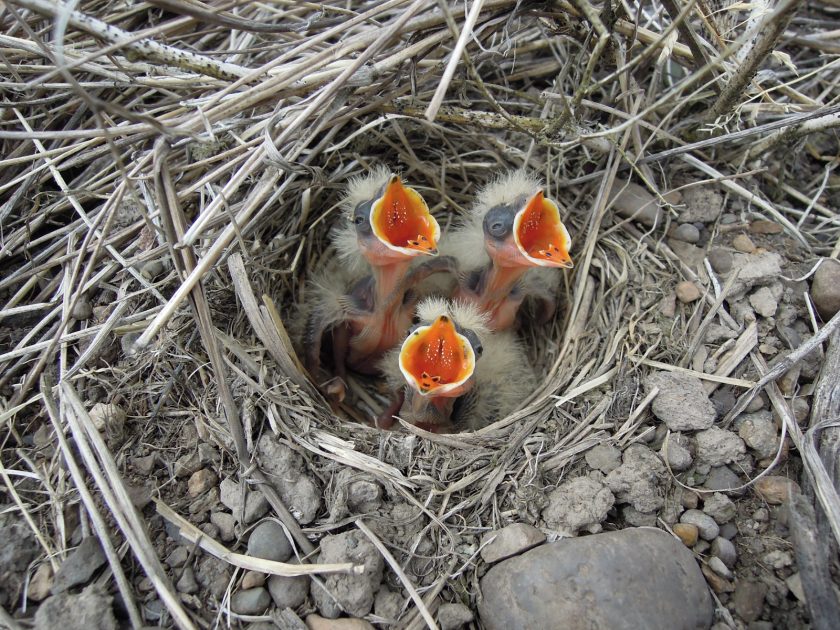
Photo credit: Dr. Randy Moore, Department of Fisheries and Wildlife at OSU via ODFW
Drive right outside of Corvallis and you will see vast expanses of flat agricultural land, much of it grass seed farms. A threatened bird species not often treated at Chintimini Wildlife Center called the Streaked Horned Lark (SHLA) breeds on this and other private land, including the airport. The largest known breeding population of the SHLA is located in the Willamette Valley. Because the lark’s habitat is so specific, suitable breeding sites must be maintained to ensure its survival.
The City of Corvallis’ Herbert Farm and Natural Area has shown to be a successful nesting site for Streaked Horned Larks.
Recent conservation efforts that were funded in part by ODFW’s Willamette Wildlife Mitigation Program (WWMP) restored part of the land to a native prairie. Another piece of the property was specifically managed for lark habitat in order to mitigate habitat loss at the airport due to runway modifications. It is on this 23-acre parcel where the birds successfully bred.
Over the summer, three chicks hatched on the site and a second pair also fledged young. While this is great news, researchers aim to ensure that these birds will continue to use this site where they can be monitored and the appropriate features of their habitat can be managed.
Streaked Horned Larks are ground nesting birds. Conservationist Bob Altman of the American Bird Conservancy (ABC) who monitored the larks for this project said that they require wide open spaces with sparse vegetation and that they use the edges of fields and even roadsides for nesting.
Habitat loss is making it difficult for these birds to thrive. ODFW biologist Ann Kreager states that “many agricultural fields in the Willamette Valley are being converted to hazelnut trees, further reducing habitat for the larks.” In fact, a road bisects the Herbert Farm & Natural Area (HFNA) as well as a private hazelnut farm, which was a grass farm not very long ago.
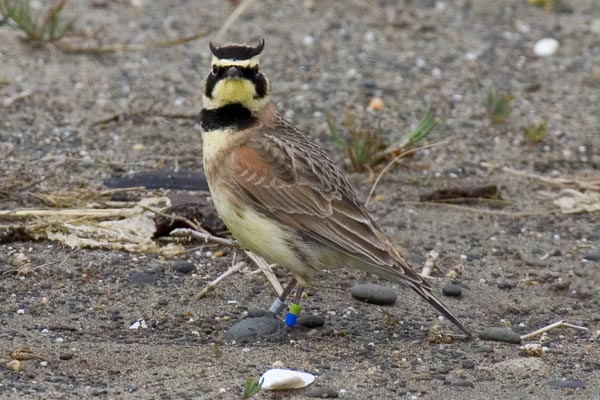
Photo credit: David Maloney/USFWS
Other disturbances, like construction, may leave birds displaced. For example, the largest known population of larks breed at the Corvallis Municipal Airport. When the airport began modifying its runways, the United States Fish and Wildlife Service (USFWS) put into place the mitigation project at HFNA. Management of the site where the Streaked Horned Larks nested was directed by Dr. Randy Moore of the Department of Fisheries & Wildlife at OSU. Institute for Applied Ecology (IAE) Restoration Ecologist Peter Moore observed that “in late May the contractors mowed and disked the area to remove thatch that had built up, and larks turned up shortly afterwards and bred.”
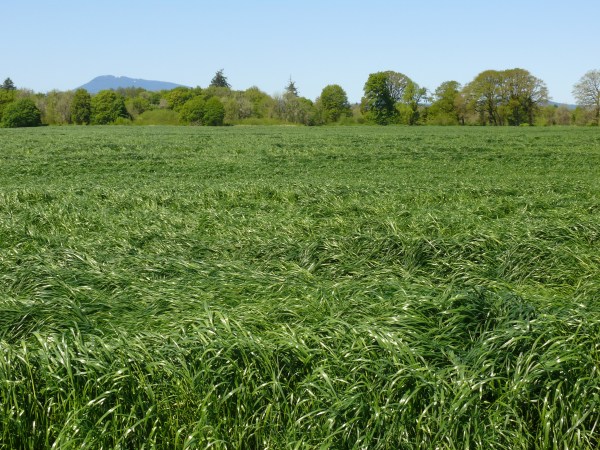
Photo credit: Peter Moore/IAE
Why the larks came and where was their origin is unknown. Sometimes it’s just a matter of how tall the grass is. Dr. Randy Moore said that a breeding pair may be on a young grass field in May but by early June the grass is too thick for nesting. At that point, whether they completed one nesting cycle or lost at a first nesting attempt, they may decide it isn’t a great spot anymore and go looking for a new site.
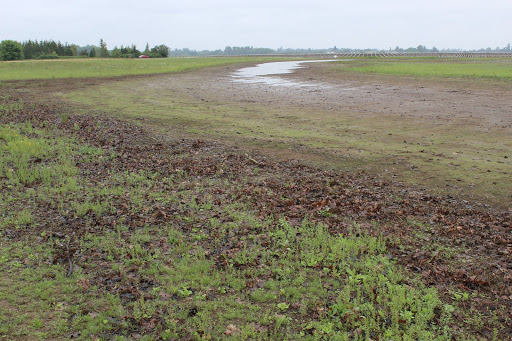
Photo credit: Peter Moore / IAE
Before the project began, HFNA was a grass seed farm that was later converted to a native prairie. Matt Bahm, the Program Director for Conservation Research at the Institute of Applied Ecology (IAE) explained that swales are one key feature that maintains habitat suitable for larks. USFWS created berms to flood swales and promote bare ground with little vegetation. Since HFNA sits where the Marys River and Muddy Creek converge, seasonal flooding can maintain these swales. Bahm continued that improving habitat on the site will also benefit all sorts of species, including migratory birds.
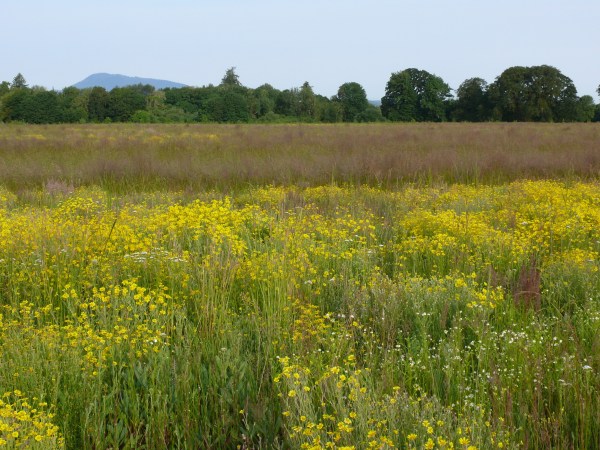
Photo credit: Peter Moore/IAE
It wasn’t necessarily the attractive-looking habitat alone that lured the larks to HFNA. They are birds with high site fidelity, Altman explained, which means that they go back to the same place where they were born and where they’ve bred in the past. This makes moving them from one location to another challenging. So the team implemented some creative tactics.
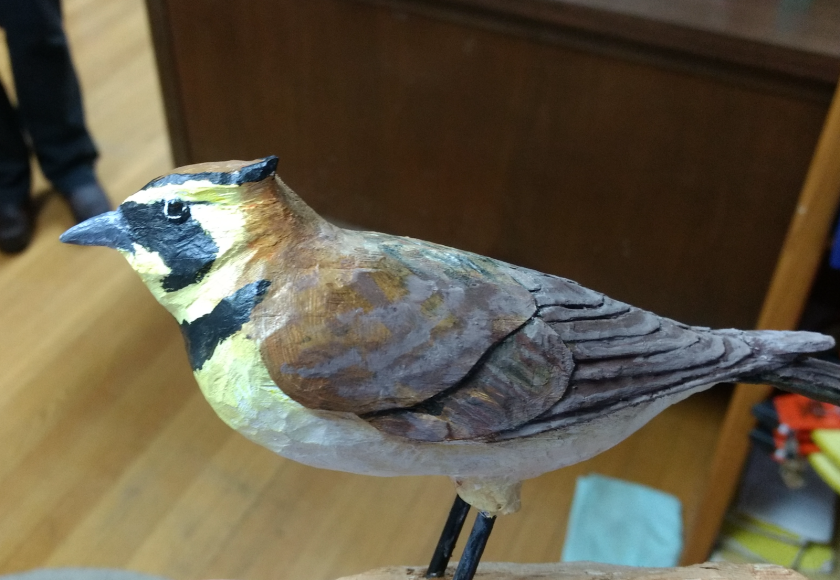
Photo credit: IAE
Local artist Howard Bruner was commissioned to make life-sized Streaked Horned Lark models and Bahm built boxes that played back breeding songs to try to convince the birds that HFNA is a safe place to breed.
All the effort paid off. Altman said that the year prior no birds settled, even though “flyovers” were observed. But this past June, two or three pairs nested. The birds were discovered when the IAE team was leading a field tour and heard a breeding song from a live bird. From there Altman’s research assistant, Lara Jones, observed a female carrying nesting material, which helped locate the nest where the three chicks later hatched. ODFW said the hatchlings were “a significant milestone as these ground nesting birds often succumb to predators and crop harvesting.”
“It was very satisfying,” Bahm said, “Last year was tough, we had a lot of monitoring and no activity, lots of data sheets but not birds, so it was definitely rewarding to have that happen.”

Photo credit: Lara Jones
According to Dr. Randy Moore, the population of Streaked Horned Larks is in the low thousands, most of which live in the Willamette Valley. So three chicks successfully fledging is a big deal. The chicks were also banded, which means they can be monitored. The goal is to continue monitoring and maintaining the HFNA as suitable lark habitat, Altman said. The City of Corvallis will continue to maintain the habitat using prescribed fire and mowing. Kreager added that “once imprinted on the site, the odds of these birds continuing to use HFNA are very high.”
What is the fate of the streaked horned lark?
Altman said that if we can attract the larks to conservation land, as was observed at HFNA, and can manage for their protection, then there is hope for this threatened species.
Dr. Randy Moore explained that “as long as the Willamette Valley produces grass/forage crops, there’s potential for SHLA habitat. But there also has to be a significant amount of land set aside for permanent lark management in the valley.” A recovery plan has been developed as required by the Endangered Species Act, which will give conservationists the tools to address the challenges that arise as the landscape changes.
What can you do?
- If you walk your dog at Herbert Farm and Natural Area, please keep them leashed – especially during nesting season April-July.
- Create habitat for Streaked Horned Larks on your own property. Check out The Willamette Valley Guide to Creating Habitat for Grassland Birds.
- Join the Streaked Horned Lark Patrol, a community project between Portland Audubon and ODFW in which you can monitor for Streaked Horned Larks at Sauvie Island Wildlife Area.
The HFNA property was acquired through funds provided by the WWMP. The City of Corvallis owns and maintains it. ODFW and Bonneville Power Administration (BPA) own a conservation easement. WWMP, Oregon Watershed Enhancement Board (OWEB), USFWS and state wildlife grants funded the project. IAE, USFWS Partners for Fish and Wildlife Program and Dr. Randy Moore (OSU) worked on habitat restoration and management. Bob Altman (ABC) monitored for the streaked horned larks.
Lark videos:

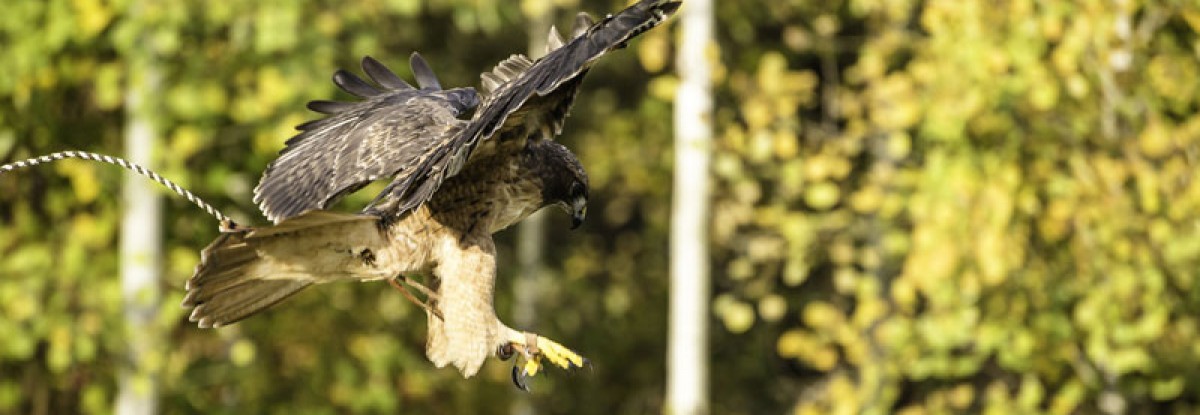










 Annabelle is a 4th year undergraduate student at Oregon State University. She will be graduating with a bachelor of science in Biology with a Chemistry minor in the spring of 2019. She starts classes at the OSU Carlson College of Veterinary Medicine in the fall of 2019 and will graduate in 2023 with a DVM degree. When not studying or working, she loves riding horses, rock climbing at Smith Rock, and skiing. She’s almost always in the company of her dog, Poke. Annabelle is grateful for the opportunity to learn from experts at Chintimini Wildlife Center for the duration of winter term.
Annabelle is a 4th year undergraduate student at Oregon State University. She will be graduating with a bachelor of science in Biology with a Chemistry minor in the spring of 2019. She starts classes at the OSU Carlson College of Veterinary Medicine in the fall of 2019 and will graduate in 2023 with a DVM degree. When not studying or working, she loves riding horses, rock climbing at Smith Rock, and skiing. She’s almost always in the company of her dog, Poke. Annabelle is grateful for the opportunity to learn from experts at Chintimini Wildlife Center for the duration of winter term. Ashlee grew up in Arizona and recently moved to Oregon in the last year to finish her bachelor’s degree in Biology at Oregon State University. She has enjoyed discovering everything Oregon has to offer over the last year, including its wildlife! She started out as a volunteer and when the intern positions were posted, she jumped at the opportunity. She will be applying to Oregon State University to pursue her Doctor of Veterinary Medicine degree and hopes to continue to volunteer at Chintimini Wildlife Center after her internship comes to an end. When she’s not at Chintimini she enjoys going on road trips to discover new places, working on a cross stitch project, baking something yummy and spending time with her two cats.
Ashlee grew up in Arizona and recently moved to Oregon in the last year to finish her bachelor’s degree in Biology at Oregon State University. She has enjoyed discovering everything Oregon has to offer over the last year, including its wildlife! She started out as a volunteer and when the intern positions were posted, she jumped at the opportunity. She will be applying to Oregon State University to pursue her Doctor of Veterinary Medicine degree and hopes to continue to volunteer at Chintimini Wildlife Center after her internship comes to an end. When she’s not at Chintimini she enjoys going on road trips to discover new places, working on a cross stitch project, baking something yummy and spending time with her two cats.
 Desirée is earning her bachelor of science degree in Animal Science & Spanish with a pre-vet track at OSU. She is completing a year-long wildlife rehab internship with Chintimini Wildlife Center and continues to volunteer her time in our clinic as well. In her downtime, she loves to travel, ride horses, and practice aikido.
Desirée is earning her bachelor of science degree in Animal Science & Spanish with a pre-vet track at OSU. She is completing a year-long wildlife rehab internship with Chintimini Wildlife Center and continues to volunteer her time in our clinic as well. In her downtime, she loves to travel, ride horses, and practice aikido.

















